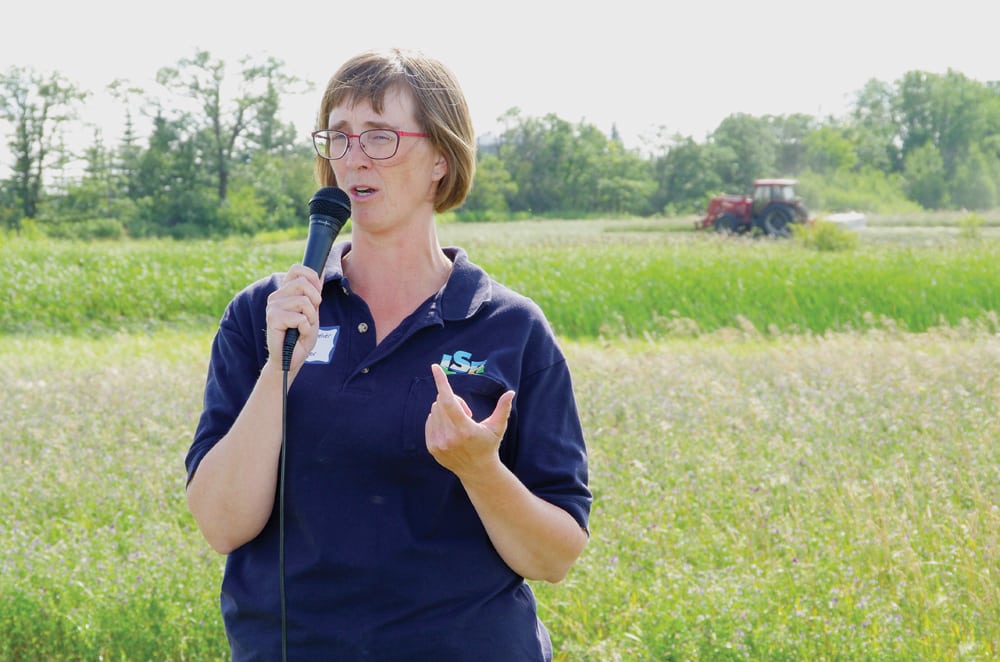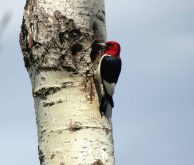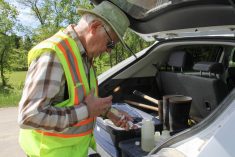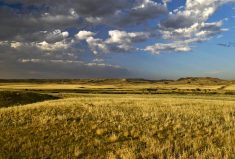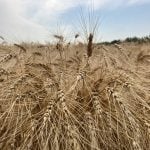A multi-province program that promises to pay landowners for conservation practices is attracting so much interest in the Little Saskatchewan River Conservation District that providers say they can’t meet the demand.
District manager and local ALUS co-ordinator, Colleen Cuvelier said program co-ordinators couldn’t accommodate all the proposals this year, estimating another 100-200 acres could have been registered.
“I’m pleased,” she said. “Our limiting factor, of course, is funding.”
Projects are developed and cost shared on environmentally sensitive land between the producer and the local ALUS branch and its partners. The producer then receives annual per-acre payment to maintain the project.
Read Also

VIDEO: PhiBer drone carrier wins ag tech innovation award
PhiBer Manufacturing’s Dash Carrier trailer can land, recharge and refill four drones. The Manitoba company won the ag tech innovation at Ag in Motion 2025.
ALUS Canada provides funds to a local advisory committee in each region where ALUS Canada has a presence. That committee, which is half filled by local farmers and filled out by local government, industry, environmental groups and other residents, then decides how to allocate those funds, implement projects and oversee followup visits.
Current wetlands, riparian areas and grasslands are all high on ALUS’s priority list, along with any land that is difficult to run equipment through, has steep slopes, salinity or chronic flood problems or, alternately, land being put to alternative, conservation-oriented management, such as rotational grazing or perennial forage.
History in the region
ALUS Canada’s Manitoba partnership is only in its third year of operation, although its history in the region stretches over a decade.
In 2006, ALUS chose the RM of Blanshard to launch its pilot project, which ran until 2009.
The organization returned in 2014 to create ALUS Little Saskatchewan River. Funded projects re-emerged the following year, with participants typically signing 10-year agreements. In 2015, 10 producers opted into the program, bringing 1,300 acres with them.
Today, about 1,850 acres and 21 landowners in the conservation district are registered, with projects ranging from wetland restoration (in concert with the Manitoba Habitat Heritage Corporation) to establishing riparian areas, promoting biodiversity, wetland enhancement through the addition of perennial forage and wetlands as protection from flooding or drought.
Many have joined because of their “conservation ethic,” Cuvelier said, while other acres have been transferred over from grain production after producers deemed the land unsuitable for annual crops.
“There has been an education aspect too,” she said, looking at the program’s growth since the pilot. “We’re not just paying for sloughs anymore… there has to be some change in management. You have to generate some additional ecosystem services, because that’s what the funders are after.”
Forage projects have been popular with local farmers so far, Cuvelier said, although wetlands, erosion mitigation, pollinator buffer strips and offsite watering projects have also passed the advisory committee.
“We’re open to discuss anything,” she said. “One size doesn’t fit all and so we need to design a project that fits in with what works for your farm.”
The program aims to keep payments level with local land rentals, ALUS Canada says, although Cuvelier said continued agricultural use might shift those payments. Producers who have signed up with the program may retain the ability to hay or graze land, therefore keeping some agricultural value.
Paige Englot, ALUS Canada hub manager for the Prairies, said ALUS Canada would like to expand in Manitoba, although the Little Saskatchewan River Conservation District is currently its only partner in the province and there are no definite expansion plans in place.
“We’re wanting to work with the best partnerships that we can find and there are some changes going on in the province, so we’re kind of trying to be engaged with the key players in some of those changes and make sure that if there is potential to be delivered in a provincial-wide program, that that program is coming out in the best way possible,” she said.
Only Prince Edward Island has created a province-wide ALUS program so far, although the organization exists in six provinces, including all three Prairie provinces, Quebec and Ontario.






